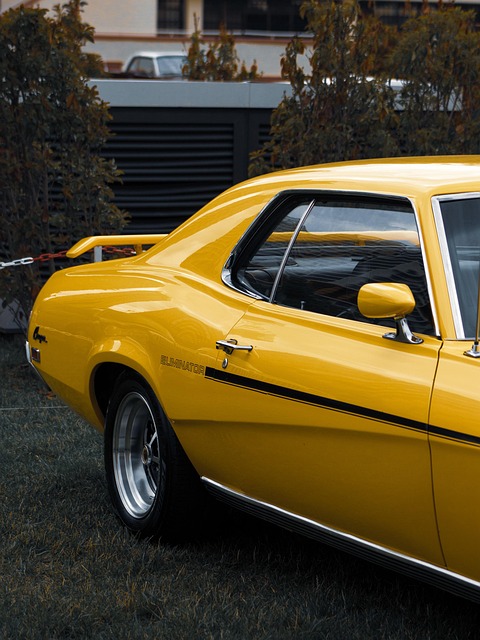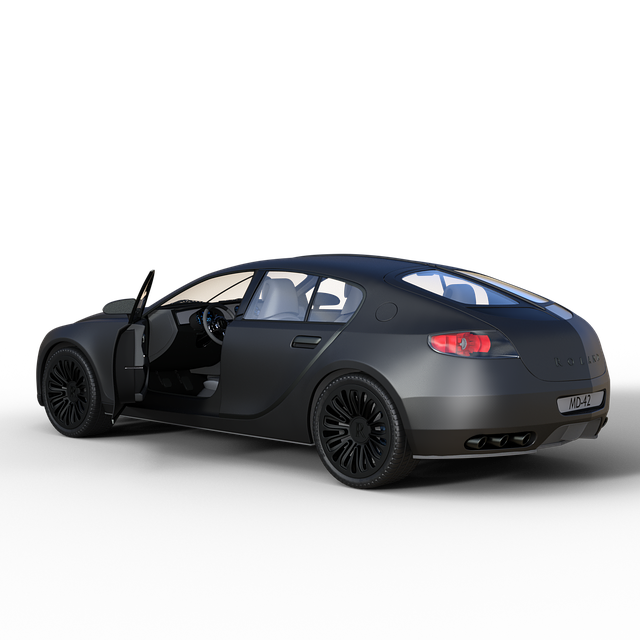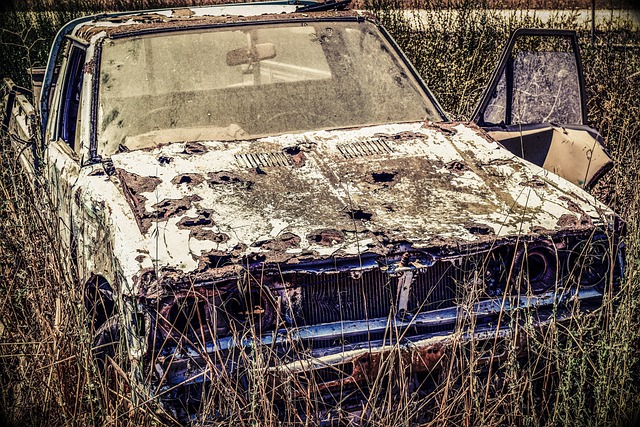Mercedes Headlamp Assist Calibration: Post-Replacement Essentials
Mercedes headlamp assist calibration is essential after replacing headlights to ensure safety and op…….
In the rapidly evolving automotive sector, advanced driver-assistance systems (ADAS) have emerged as a cornerstone of modern vehicle technology. At the forefront of these innovations stands Mercedes headlamp assist calibration—a sophisticated process that optimizes and fine-tunes the performance of adaptive headlamps, enhancing safety and driving experience. This article aims to delve into the intricacies of this technology, its global impact, technological underpinnings, and the challenges it faces, providing a comprehensive understanding of its role in shaping the future of mobility.
Definition: Mercedes headlamp assist calibration is a meticulous process that adjusts the beam pattern and intensity of adaptive LED headlamps in real-time to ensure optimal illumination for safe driving, regardless of road conditions or surrounding vehicles. This technology is particularly crucial for enhancing night-time visibility and mitigating glare for drivers.
Core Components:
Adaptive Headlamp System (AHS): The heart of the process, AHS uses a network of sensors, cameras, and actuators to control individual LED modules within the headlamps. These components work in harmony to shape and adjust the light beam dynamically.
Sensors: Various sensors are employed to gather data on road conditions, weather, and nearby vehicles. These include ambient light sensors, rainfall sensors, and forward-looking cameras capable of detecting obstacles and other traffic participants.
Control Unit: A sophisticated control unit processes the sensor data and calculates the required headlamp pattern and intensity adjustments. It ensures precise control over each LED segment, enabling dynamic beam shaping.
LED Headlamps: The physical embodiment of the system, modern Mercedes LED headlamps are designed with individual modules that can be controlled independently, allowing for intricate beam patterns and improved light distribution.
Historical Context: The concept of adaptive headlamps dates back to the 1980s when early models used mechanical adjustments to tilt the lamp units. However, technological advancements have led to the current generation of fully electronic systems, offering unprecedented precision and flexibility in lighting control. Mercedes-Benz has been at the forefront of this evolution, refining its headlamp assist calibration systems over the years to deliver superior performance.
Significance: The primary advantage lies in enhanced safety, as drivers gain better visibility during night driving, rainy conditions, or when encountering on-road obstacles. This technology also contributes to improved driver comfort and reduced glare from oncoming traffic, making long-distance drives more pleasant.
Mercedes headlamp assist calibration has gained worldwide recognition and adoption due to its significant safety benefits. Here’s a global outlook:
North America: The United States and Canada have been early adopters, with stringent safety regulations driving the integration of advanced lighting systems. Mercedes’ offerings in this region are well-received, contributing to the brand’s reputation for innovation.
Europe: European countries have embraced ADAS as a standard feature, thanks to strict safety standards and consumer demand. Germany, as a automotive powerhouse, has played a pivotal role in shaping the development and adoption of advanced lighting technologies.
Asia Pacific: Countries like Japan and South Korea are known for their technological prowess and early acceptance of luxury vehicles equipped with cutting-edge features. Mercedes has strategically focused on these markets, offering tailored solutions that cater to local driving conditions and preferences.
Global Trends: Several trends are shaping the future of Mercedes headlamp assist calibration:
Increasing Adoption of Electric Vehicles (EVs): As EVs gain popularity, manufacturers are integrating advanced lighting systems into their designs, aligning with Mercedes’ efforts to offer cutting-edge technology across its vehicle lineup.
5G Connectivity: The rollout of 5G networks enables faster data transfer for real-time sensor fusion and improved control of ADAS, enhancing the overall performance of headlamp assist calibration.
Personalization: There is a growing trend toward personalized driving experiences, with Mercedes exploring ways to allow users to customize their headlamp settings according to individual preferences and driving conditions.
The economic implications of Mercedes headlamp assist calibration are multifaceted, influencing both the automotive industry and the broader economy:
Market Dynamics: The global market for ADAS is expanding rapidly, with a growing demand for advanced lighting systems. This trend presents significant opportunities for Mercedes and other automakers to invest in research and development, fostering innovation and creating new revenue streams.
Investment Patterns: Major automotive manufacturers are allocating substantial resources to develop and integrate ADAS into their vehicle lineups. For instance, Mercedes-Benz Group AG has invested billions in electric and autonomous driving technologies, ensuring its position as a leader in the industry.
Economic Impact: The adoption of advanced lighting systems contributes to economic growth by:
Job Creation: Research and development, manufacturing, and sales of ADAS components drive job opportunities across various sectors.
Industry Growth: The automotive industry benefits from increased sales and revenue, encouraging further investment in technology and infrastructure.
Reduced Insurance Costs: Improved safety features like adaptive headlamps can lead to lower insurance premiums for drivers, representing significant cost savings on a macro-economic level.
Mercedes headlamp assist calibration has witnessed several technological breakthroughs that have enhanced its capabilities:
Deep Learning and Computer Vision: These AI-driven technologies enable the system to learn from vast datasets of road and weather conditions, improving its predictive capabilities for pattern recognition and adaptive lighting control.
High-Resolution Cameras: Advanced cameras with higher resolution and improved image processing algorithms capture intricate details, enhancing object detection and tracking accuracy, especially in low-light conditions.
Laser Scanning Technology: LiDAR (Light Detection and Ranging) sensors provide precise 3D mapping of the surroundings, enabling the system to anticipate potential hazards and adjust lighting accordingly.
Wireless Communication: The integration of wireless communication protocols allows for faster data transfer between vehicle systems, ensuring real-time response during dynamic driving conditions.
Government regulations play a critical role in promoting and governing the development and adoption of Mercedes headlamp assist calibration and other ADAS features:
Safety Standards: Organizations like Euro NCAP (European New Car Assessment Programme) set rigorous safety standards for vehicles, incentivizing manufacturers to incorporate advanced lighting systems to achieve higher safety ratings.
Emission Regulations: While not directly related to lighting technology, stricter emission norms drive the need for more fuel-efficient and electric vehicle solutions, indirectly influencing the development of ADAS as a whole.
Data Privacy Laws: With the increasing reliance on sensor data and connectivity, regulations like GDPR (General Data Protection Regulation) in Europe govern how vehicle manufacturers collect, store, and use driver data, ensuring privacy and security.
Despite its numerous advantages, Mercedes headlamp assist calibration faces several challenges that need to be addressed:
High Cost of Development: Creating advanced lighting systems requires substantial investment in research, development, and manufacturing, making it a significant financial burden for automakers, especially smaller players.
Sensor Reliability: Ensuring the reliability and longevity of sensors exposed to harsh environmental conditions is crucial. Any failure or malfunction could impact system performance and safety.
Dynamic Lighting Control: Achieving seamless and precise control of light distribution during rapid changes in driving conditions, such as merging into high-speed traffic, remains a technical challenge.
Criticisms and Misconceptions: Some critics argue that adaptive headlamps may cause glare for oncoming drivers, but modern systems employ sophisticated algorithms to minimize this issue, and proper calibration is essential to address any residual concerns.
Strategies to Overcome Challenges:
Cost Reduction through Collaboration: Automakers can collaborate on research and development, sharing costs and technologies, to make advanced lighting systems more accessible.
Advanced Materials and Testing: Investing in robust materials and rigorous testing protocols can enhance sensor reliability and durability.
Real-world Testing and Calibration: Conducting extensive real-world testing and calibration routines ensures optimal system performance and safety.
Public Education and Transparency: Addressing misconceptions through public awareness campaigns can foster acceptance of these technologies and alleviate concerns among drivers.
Mercedes-Benz’s flagship S-Class sedan has been a testbed for headlamp assist calibration technology, gathering real-world data from various driving conditions and climates. The system’s performance has been remarkable, demonstrating superior visibility during night drives and adaptability to changing weather patterns. Driver feedback has been overwhelmingly positive, praising the improved safety and comfort features.
In urban areas with dense traffic, Mercedes’ adaptive headlamps have been implemented to optimize light distribution, reducing glare for nearby pedestrians and drivers. The system’s ability to dynamically adjust beam patterns has enhanced night-time visibility without causing nuisance to others, leading to safer city driving conditions.
Long-haul truckers have benefited from Mercedes headlamp assist calibration, which improves visibility during early morning and late-night drives, reducing the risk of accidents caused by fatigue and poor lighting. This application highlights the system’s role in enhancing driver safety and efficiency on interstate highways.
The future of Mercedes headlamp assist calibration is bright, with several potential growth areas and emerging trends:
Integration with Autonomous Vehicles: As autonomous driving technology advances, these systems will play a pivotal role in ensuring safe navigation during all lighting conditions, contributing to the overall safety and efficiency of self-driving cars.
Personalized Lighting Profiles: Future systems may offer customizable lighting profiles tailored to individual driver preferences and vehicle use cases, enhancing the overall driving experience.
5G-Enabled Advanced Features: With 5G connectivity, expect even more sophisticated features like real-time traffic data integration for adaptive beam shaping, ensuring optimal visibility at all times.
Sustainable Lighting Solutions: Researchers are exploring eco-friendly lighting technologies, aiming to reduce energy consumption and environmental impact while maintaining superior performance.
Mercedes headlamp assist calibration represents a significant milestone in the evolution of automotive technology, combining cutting-edge sensors, advanced materials, and sophisticated control algorithms to enhance driver safety and comfort. As global regulations continue to prioritize vehicle safety and technological innovation, this technology will only become more ubiquitous on roads worldwide. By addressing challenges through collaboration, rigorous testing, and public education, the automotive industry can unlock the full potential of adaptive headlamps, paving the way for safer and more enjoyable driving experiences in the future.
Q: How does Mercedes headlamp assist calibration differ from regular adaptive headlamps?
A: While both share similar core components, the key difference lies in the level of sophistication and real-time control. Mercedes’ system employs advanced algorithms, high-resolution sensors, and precise actuators to achieve unparalleled precision in beam shaping, ensuring optimal illumination for diverse driving conditions.
Q: Can these adaptive headlamps cause glare for oncoming drivers?
A: Modern systems are designed with glare mitigation as a priority. They use dynamic beam patterns that lower the intensity of light directed at oncoming traffic, reducing glare and ensuring safe night-time driving for all. Proper calibration and sensor fusion play crucial roles in achieving this balance.
Q: How does headlamp assist calibration impact fuel efficiency?
A: While it primarily focuses on enhancing safety and visibility, well-optimized adaptive lighting systems can contribute to improved fuel efficiency by reducing the need for high-beam usage during night driving, as the system automatically switches between low and high beams based on conditions.
Q: What role do 5G networks play in Mercedes headlamp calibration?
A: 5G connectivity enables faster data transfer rates, allowing for real-time sensor fusion and improved control of adaptive lighting systems. This technology is crucial for future advancements, enabling features like traffic-aware beam shaping and enhanced safety applications.
Q: Are there any plans to integrate this technology into vehicles other than luxury cars?
A: Absolutely. Mercedes-Benz and other automakers are actively exploring ways to make advanced lighting systems more accessible across various vehicle segments, including mass-market models, as consumer demand for safety and convenience features continues to grow.

Mercedes headlamp assist calibration is essential after replacing headlights to ensure safety and op…….

Mercedes headlamp assist calibration is a vital process for repairing Advanced Driver Assistance Sys…….

Mercedes Headlamp Assist Calibration is a crucial process for maintaining Advanced Driver Assistance…….

Mercedes Headlamp Assist Calibration is crucial for optimal vehicle performance, safety, and legal c…….

Mercedes Headlamp Assist Calibration is a revolutionary technology that optimizes headlight performa…….

Mercedes headlamp assist calibration is a critical process that ensures headlights meet OEM standard…….

Mercedes Headlamp Assist Calibration is a critical system that optimizes and maintains your vehicle&…….

Mercedes Headlamp Assist Calibration is a vital process that adjusts beam range and swivel, ensuring…….